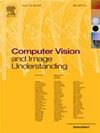Uniss-MDF: A Multidimensional Face dataset for assessing face analysis on the move
IF 3.5
3区 计算机科学
Q2 COMPUTER SCIENCE, ARTIFICIAL INTELLIGENCE
引用次数: 0
Abstract
Multidimensional 2D–3D face analysis has demonstrated a strong potential for human identification in several application domains. The combined, synergic use of 2D and 3D data from human faces can counteract typical limitations in 2D face recognition, while improving both accuracy and robustness in identification. On the other hand, current mobile devices, often equipped with depth cameras and high performance computing resources, offer a powerful and practical tool to better investigate new models to jointly process real 2D and 3D face data. However, recent concerns related to privacy of individuals and the collection, storage and processing of personally identifiable biometric information have diminished the availability of public face recognition datasets.
Uniss-MDF (Uniss-MultiDimensional Face) represents the first collection of combined 2D–3D data of human faces captured with a mobile device. Over 76,000 depth images and videos are captured from over 100 subjects, in both controlled and uncontrolled conditions, over two sessions. The features of Uniss-MDF are extensively compared with existing 2D–3D face datasets. The reported statistics underscore the value of the dataset as a versatile resource for researchers in face recognition on the move and for a wide range of applications. Notably, it is the sole 2D–3D facial dataset using data from a mobile device that includes both 2D and 3D synchronized sequences acquired in controlled and uncontrolled conditions. The Uniss-MDF dataset and the proposed experimental protocols with baseline results provide a new platform to compare processing models for novel research avenues in advanced face analysis on the move.
unis - mdf:用于评估移动中的人脸分析的多维人脸数据集
多维2D-3D人脸分析已经在多个应用领域展示了人类识别的强大潜力。结合、协同使用来自人脸的2D和3D数据可以抵消2D人脸识别的典型局限性,同时提高识别的准确性和鲁棒性。另一方面,当前的移动设备通常配备了深度摄像头和高性能计算资源,为更好地研究新模型以联合处理真实的二维和三维人脸数据提供了强大而实用的工具。然而,最近对个人隐私和个人可识别生物信息的收集、存储和处理的担忧减少了公共人脸识别数据集的可用性。Uniss-MDF (Uniss-MultiDimensional Face)代表了第一个用移动设备捕获的人脸2D-3D数据集合。超过76,000幅深度图像和视频从100多个对象中捕获,在受控和非受控条件下,超过两个会议。与现有的2D-3D人脸数据集进行了广泛的比较。报告的统计数据强调了数据集作为移动面部识别研究人员和广泛应用的通用资源的价值。值得注意的是,它是唯一的2D - 3D面部数据集,使用来自移动设备的数据,包括在受控和非受控条件下获得的2D和3D同步序列。Uniss-MDF数据集和提出的具有基线结果的实验方案提供了一个新的平台来比较处理模型,为高级移动人脸分析的新研究途径提供了一个新的平台。
本文章由计算机程序翻译,如有差异,请以英文原文为准。
求助全文
约1分钟内获得全文
求助全文
来源期刊

Computer Vision and Image Understanding
工程技术-工程:电子与电气
CiteScore
7.80
自引率
4.40%
发文量
112
审稿时长
79 days
期刊介绍:
The central focus of this journal is the computer analysis of pictorial information. Computer Vision and Image Understanding publishes papers covering all aspects of image analysis from the low-level, iconic processes of early vision to the high-level, symbolic processes of recognition and interpretation. A wide range of topics in the image understanding area is covered, including papers offering insights that differ from predominant views.
Research Areas Include:
• Theory
• Early vision
• Data structures and representations
• Shape
• Range
• Motion
• Matching and recognition
• Architecture and languages
• Vision systems
 求助内容:
求助内容: 应助结果提醒方式:
应助结果提醒方式:


